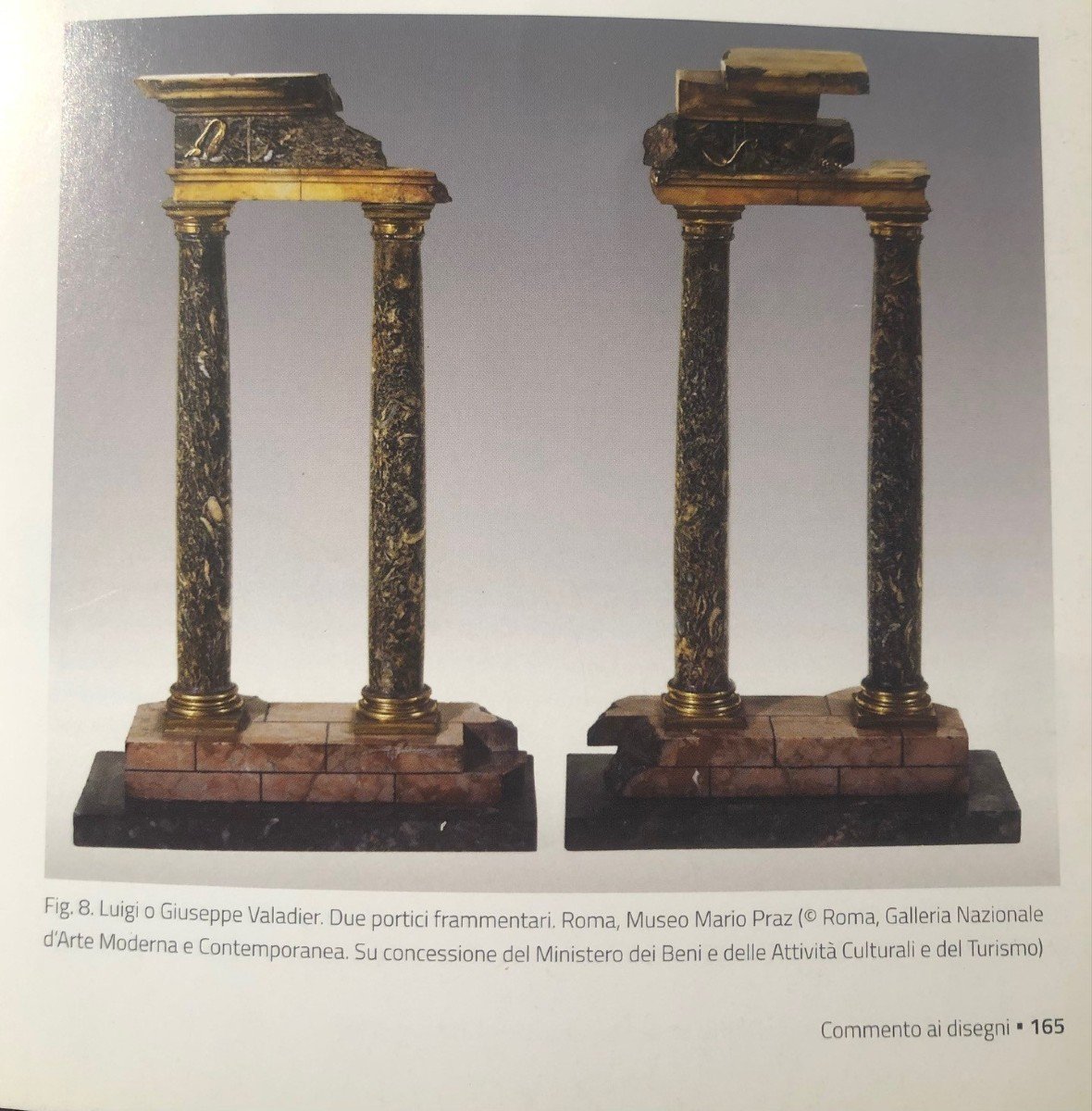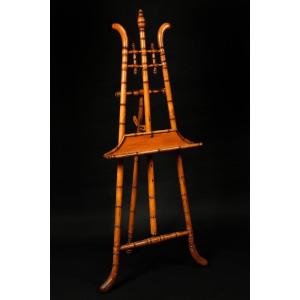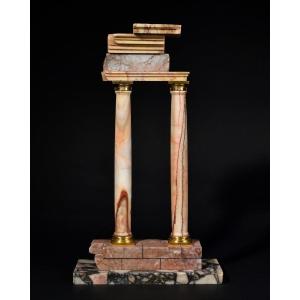Portico of temple.
Ribboned alabaster, african marble, phocaean rose marble and gilded bronze.
Circa 1780.
This colonnade, probably part of a dessert, could be attributed to the Valadiers thanks to a pair of similar ruins kept in the Mario Praz museum.
Masterpieces of art in Rome in the 1770s and 1780s, the Valadier desserts have not survived in their entirety to the ravages of time and successive sales. Those of Luigi Braschi Onesti, duke of Nemi, preserved in the Louvre Museum and of the Bailli de Breteuil, preserved in the Archaeological Museum of Madrid, are incomplete.
Nevertheless, the drawings made by Guiseppe Valadier, give indications on some pieces that were made by the Valadier workshop. In a set preserved in the Napoleonic Museum in Rome, which includes various designs for different desserts, a sheet shows a pair of similar porticoes. These two porticoes are in the collection of the Mario Praz Museum in Rome.
Our portico is identical to the one represented on the right in its composition. The size is also close: those of the Mario Praz Museum are around 45 cm high.
These falsely ruined elements were rare in the Valadier desserts, but there is the example of the one reproducing some temples of Pompeii, which has not survived except for the temple of Isis that uses some of the same stones as our colonnade. A drawing of this especially with elements also exists, which attests the project. It is possible that our temple portico was once integrated in a dessert of this spirit.
Bibliography :
Alvar Gonzàlez-Palacios, (2015), I Valadier, L’album dei disegni del Museo Napoleonico. Rome : Palombi Editori, p. 82 et 165.
Alvar Gonzàlez-Palacios, (2019), I Valadier, Andrea, Luigi, Giuseppe. Milan : Officina Libraria, p. 296.























 Le Magazine de PROANTIC
Le Magazine de PROANTIC TRÉSORS Magazine
TRÉSORS Magazine Rivista Artiquariato
Rivista Artiquariato
